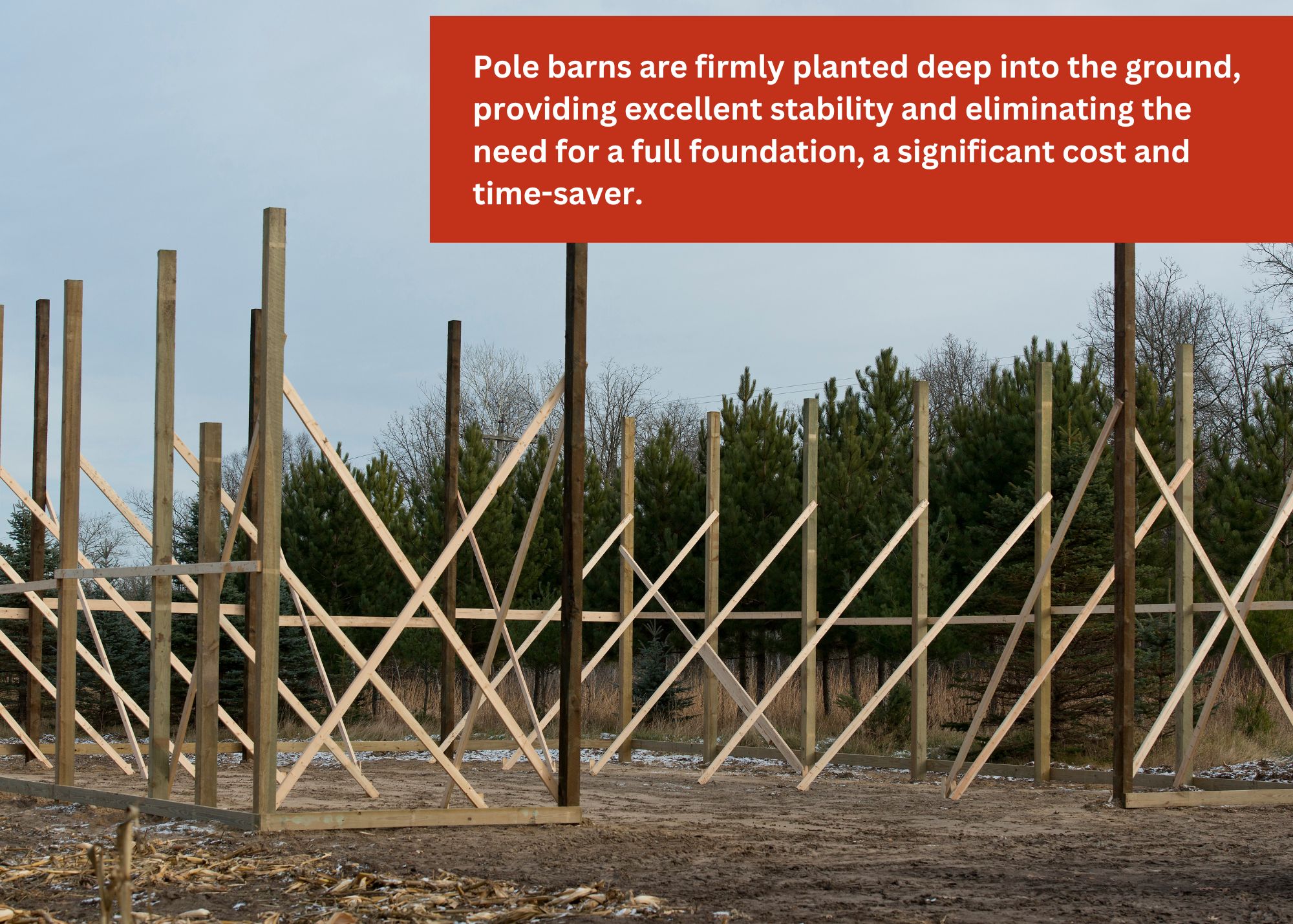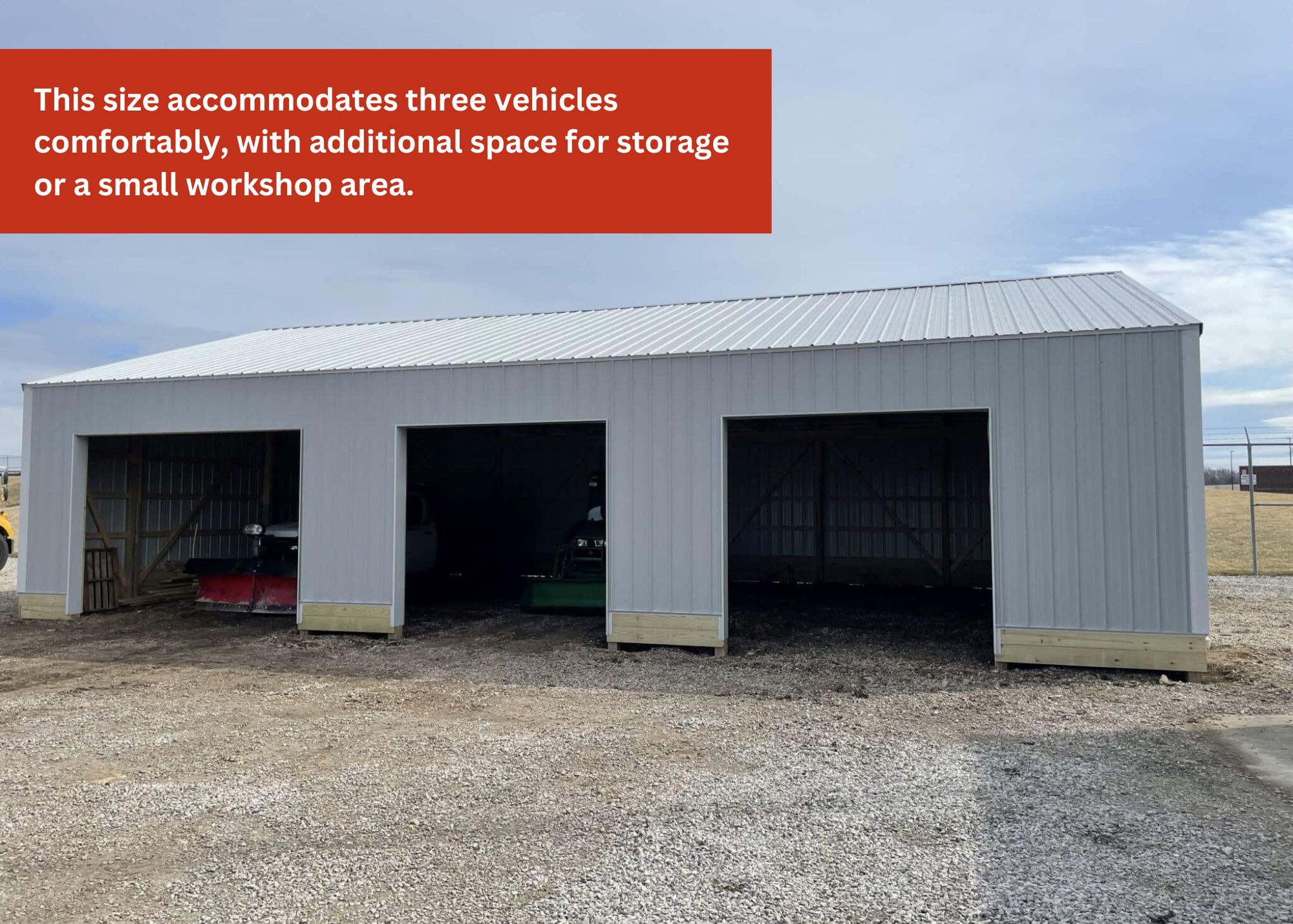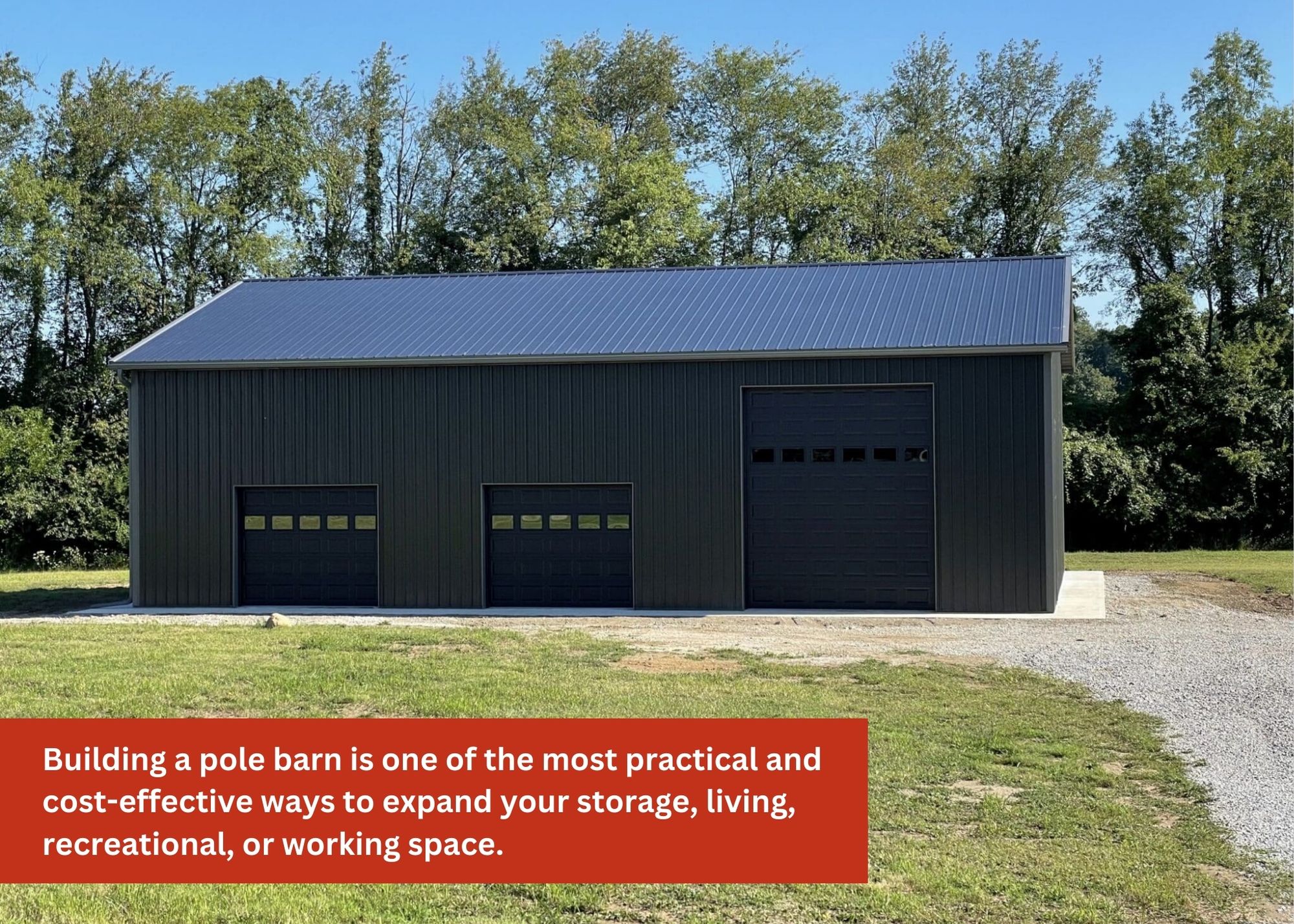Pole Barn Sizes: Building the Perfect Barn for Your Lifestyle
Do you have an ever-growing collection of cars, motorcycles, or farm or construction machinery? Do you need a special space for your hobbies or work? If so, you might be looking for more space in the form of a pole barn.
With a simple design and clever application of physics, pole barns are structural wonders. They are easy to build, versatile, strong, and budget-friendly.
In this blog, we’ll discuss barn sizes, and some suggested uses. Like the One Ring to rule them all, the pole barn’s versatility allows you to build virtually any sized structure to meet your equipment, agricultural, garage, hobby, or housing needs. And instead of being forged in the fires of Mount Doom, our barns are designed here in Tarlton, OH!
At Hilltop Post Buildings, we’ve been building quality custom pole barns for folks in Central Ohio since 2012. We don’t just build barns; we want to work with you to ensure you have the barn that best fits your needs.
Let’s get started!
Table of Contents
Pole Barns: Some Basics
A pole barn is a large building with an open interior and poles set in the ground instead of a regular foundation. The key to holding up the pole barn's structure is vertical poles, called "posts," typically wood, steel, or concrete. They're firmly planted deep into the ground, providing excellent stability and eliminating the need for a full foundation, a significant cost and time-saver.

Topping off the structure are trusses, which form the roof. Because trusses are designed to handle large loads across large spans, this combination of post and truss leads to the pole barn’s open, column-free interior, which is a distinct advantage over traditional stick construction buildings with load-bearing interior walls inside, so you have a vast, open space to work with.
Now that we’ve familiarized ourselves with the basics of pole barns, let’s talk about the applications of this wonder building.
Common Pole Barn Sizes and Uses
Whether planning to use a pole barn for traditional agricultural purposes or more creative endeavors, understanding the typical sizes and their uses can help you make the best decision. Note that these sizes illustrate potential uses; you can always specify the dimensions to suit your needs.
24’x24’ Pole Barns
24’x24’ barns are usually general-purpose barns. They’re great for storing lawn equipment, gardening tools, or seasonal items. Keep your grill, outdoor furniture, bicycles, and lawnmower out of the elements during the winter, and swap them out for snowblowers, snowmobiles, skis, and Christmas yard decorations once the weather warms up. These barns offer a practical solution for decluttering your main living space.
For those with a few livestock or pets, a 24’x24’ barn can serve as a cozy shelter to keep them out of the elements year-round.
A barn this size would be great for a tiny home, guest house, or an Airbnb.

Imagine using a little house for your kid’s sleepovers, hosting friends and family for visits, or renting your barn out to guests to offset the cost of your structure.
These barns' small but usable size also makes them perfect as an art, recording studio, or craft room. Transform this space into a creative haven where you can paint, sculpt without distractions, and sneak your latest model airplane or yarn purchases into the barn without your spouse noticing!
Finally, given the popularity of remote work, a 24'x24' barn can be easily converted into a quiet, dedicated home office.
30’x40’ Pole Barns
If you’re a classic car enthusiast or have several cars, a 30’x40’ pole barn garage might be right for you. This size accommodates three vehicles comfortably, with additional space for storage or a small workshop area.

A barn of this size is also suitable for farmers and contractors to securely store machinery and larger equipment.
Do you run a retail business? Entrepreneurs can use a barn of this size for a small shop or boutique, providing a cozy and welcoming environment for customers. It’s also appropriate for small to medium-sized food and beverage businesses, such as coffee shops or cafes.
A 30’x40’ barn is also ideal for creating a personal gym! Kit out your barn with weights, machines, and an open workout space. You’ll never have to wait in line to use gym equipment again!
40’x60’ Pole Barn
A 40'x60’ is suitable for businesses needing ample space for a large workshop, manufacturing space, or agricultural space to store hay, feed, large farming equipment, or shelter for larger farm animals, such as cows or pigs.
A pole barn can be used as a multi-purpose garage to store an RV, boats, or even a small aircraft hangar, as well as accessories and tools in this spacious barn.

If you love to swim but don’t enjoy the crowds at the local public pool, a 40’x60’ barn can be used as the structure for an indoor swimming barn. Some engineering challenges are involved in such a project, so it’s crucial to consult with a reliable contractor.
40'x60' barns are also great gathering spaces, making them suitable as community centers. Imagine hosting meetings, classes, and social events inside a cozy barn!
50’x80’ Pole Barn
This barn size is ideal for businesses needing significant storage space for inventory or supplies or commercial retail space with a sizable store and showroom.
A pole barn of this size also makes a great horse barn with the capacity to accommodate multiple stalls and enough space for a tack room and feed storage area.

For sports, a 50’x80’ is sufficiently large to accommodate a volleyball court or an intermediate-indoor batting cage, perfect for keeping your batting edge all year round.
Pole barns of this size can create memories as well. Transform this barn into a rustic yet elegant venue for weddings and receptions, or use the expansive space for set designs, photo shoots, or video production.
60’x100’ Pole Barn
Barns of this size are suitable for industrial storage, such as storing large quantities of goods or heavy machinery in a warehouse, or for agricultural use, such as providing room for cattle or other livestock.

A barn of this size is also ideal for sporting uses. You can fit a half-size basketball court, junior basketball court, indoor soccer field, or a collegiate/professional-sized batting cage with plenty of space for storage or locker room facilities.
A pole barn's large, open spaces are also ideal for an educational facility, perfect for classrooms, workshops, or training sessions. You can also use them for hosting concerts, plays, or other performances with some acoustic adjustments.
80x120 Pole Barn and Beyond
What can’t you do with larger pole barns? Use the space for a mega warehouse. This massive size is ideal for major distribution centers or extensive warehousing needs. Accommodate a full-scale farming operation with storage for equipment, feed, and livestock.
The large pole barn is perfect for equestrian enthusiasts. Its open floor offers an ample, weather-protected space for riding and training.
Finally, a pole barn’s expansive floor plan is the ideal basis for a church, large event hall, or indoor sports.

If you can dream it, you can build it!
Considerations When Building a Pole Barn
The beauty of a pole barn is the ease of building it up. Whether you’re building an open space barn for livestock or enclosing it for various needs, the basic structure is still the same, and all you need to do is add what you need to complete the building. Here are some considerations for building your pole barn:
- Floors: Consider the type of flooring needed. Will this be a livestock barn or farm storage facility? A dirt floor may be sufficient. However, if you’re looking to pour a concrete floor, additional work may be required, such as reinforcing the floor with rebar or accommodating plumbing.
- Walls and roofs: A barn needs a roof as a bare minimum to qualify as a shelter. Corrugated metal roofing is a low-cost but strong material for a roof. In contrast, more expensive standing seam metal roofs are more aesthetically pleasing, making them suitable for residential or commercial use. Standing seam roofs are also suitable mounting surfaces for solar panels.
As far as walls are concerned with pole barns, the sky’s the limit! Choose traditional wood siding for a rustic, old-fashioned look or a more modern look like fiber cement, vinyl, or steel. You can even kill two birds with one stone by putting up walls and insulating them with insulated concrete form (ICF) blocks.
- Doors and windows: If you’re building walls, you’ll need doors and windows. Prioritize doors and windows that are secure, insulating, and fire-resistant.
- Insulation: You can insulate your barn in three ways. Conventional insulation, such as batting or insulating board, offers the most flexibility regarding how much insulation you want to use and where you want it to be, with some extra work. Newcomers to the insulation game, such as InSoFast insulation panels, are an effective and innovative way to insulate your walls. Finally, insulated concrete form walls are perfect for building strong, long-lasting, energy-efficient pole barns.
Conclusion
Building a pole barn is one of the most practical and cost-effective ways to expand your storage, living, recreational, or working space.

From airplanes, guitars, and horses to churches, pole barns can easily take on any need. Your only limit is your creativity.
At Hilltop Post Buildings, we make your new pole barn easy! Every pole barn we’ve constructed has been built based on integrity, quality, and customer satisfaction. Let us know what you have in mind, and we promise you’ll love what we’ve built from the moment you contact us to the day we hand your new pole barn to you.
Contact us today for a meaningful conversation about your pole barn vision!




